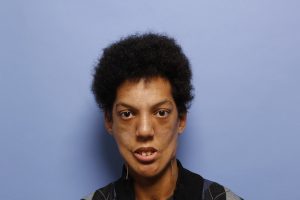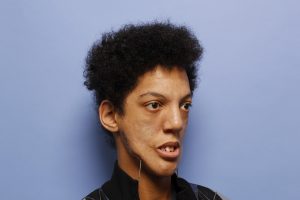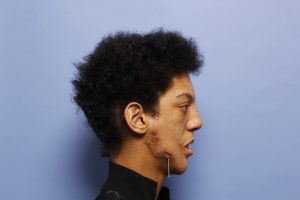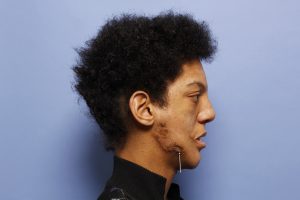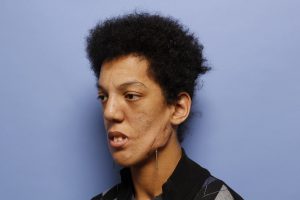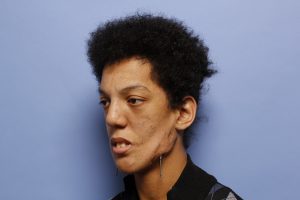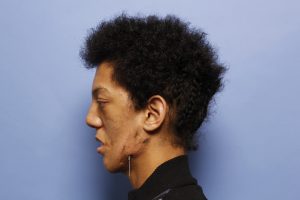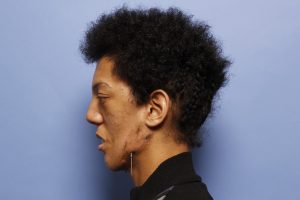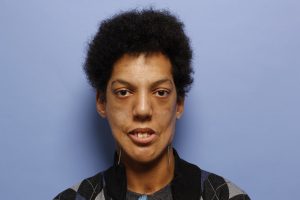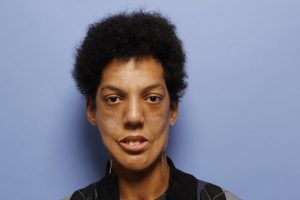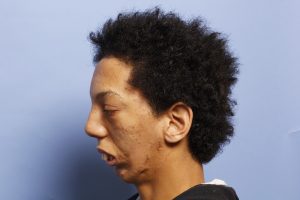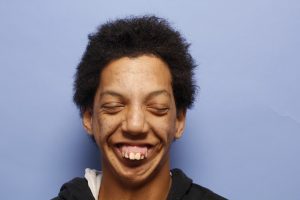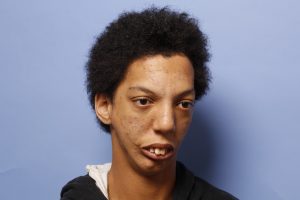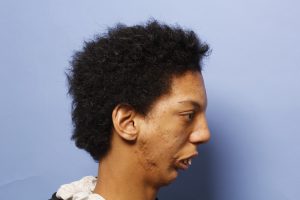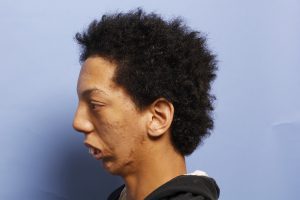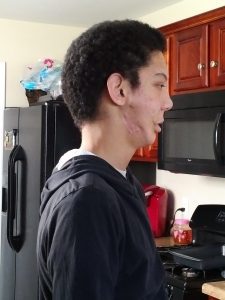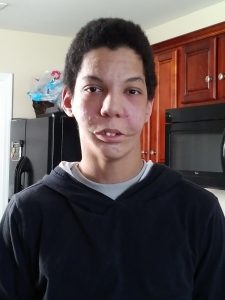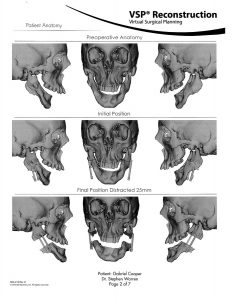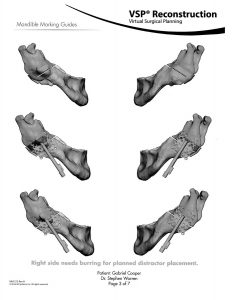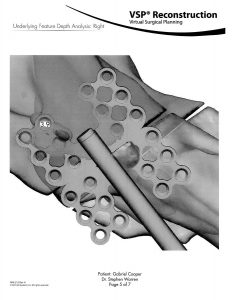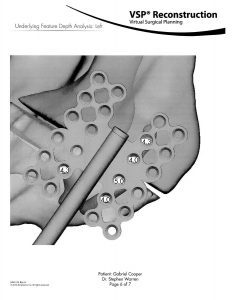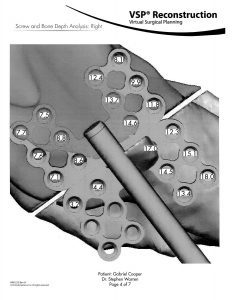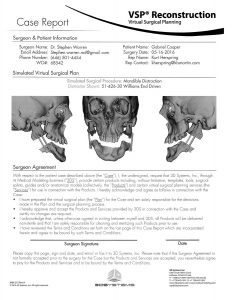
Pierre Robin syndrome, also known as Pierre Robin sequence, is a genetic anomaly of chromosomes 2, 11, or 17. It causes developmental defects in sequence, one leading to the next, which is why it is sometimes called Pierre Robin sequence.

Pierre Robin syndrome, also known as Pierre Robin sequence, is a genetic anomaly of chromosomes 2, 11, or 17. It causes developmental defects in sequence, one leading to the next, which is why it is sometimes called Pierre Robin sequence.
What does it look like?
A child born with Pierre Robin syndrome will often have the following physical characteristics:
● A lower jaw that is smaller than average
● A tongue that falls back in the throat
● Obstructed airways
● In many cases, cleft palate
Pierre Robin syndrome can range from mild to severe. A child with mild Pierre Robin syndrome may have trouble sleeping due to obstructed airways or trouble eating. In more severe cases, when undiagnosed or untreated, Pierre Robin syndrome can be quite severe. Complications include hypoxia (inadequate oxygen supply throughout the body), feeding trouble, right-sided heart failure, and cerebral impairment. Again, this is when left untreated, so please do not panic! There is much that can be done to treat Pierre Robin syndrome once diagnosed.
How is it diagnosed?
Pierre Robin is diagnosed with a thorough examination of the child’s airways. A good first step would be to see your pediatrician. If your pediatrician suspects that your child has Pierre Robin syndrome, you can then seek help from a specialist. If you are interested in seeking care at Little Baby Face Foundation, where we specialize in treating birth defects like Pierre Robin, you can fill out the form below to get started.
How is it treated?
Luckily, there’s a lot that can be done for children with Pierre Robin syndrome. Treatment depends on the child’s individual condition. For mild cases, treatment may be non-invasive and may involve preventative measures, such as placing the child on his or her side or back while sleeping to avoid the tongue blocking air passage. For more severe cases, surgical interventions are necessary.
WARNING
A child born with Pierre Robin syndrome will often have the following physical characteristics:
● A lower jaw that is smaller than average
● A tongue that falls back in the throat
● Obstructed airways
● In many cases, cleft palate
Pierre Robin syndrome can range from mild to severe. A child with mild Pierre Robin syndrome may have trouble sleeping due to obstructed airways or trouble eating. In more severe cases, when undiagnosed or untreated, Pierre Robin syndrome can be quite severe. Complications include hypoxia (inadequate oxygen supply throughout the body), feeding trouble, right-sided heart failure, and cerebral impairment. Again, this is when left untreated, so please do not panic! There is much that can be done to treat Pierre Robin syndrome once diagnosed.
How is it diagnosed?
Pierre Robin is diagnosed with a thorough examination of the child’s airways. A good first step would be to see your pediatrician. If your pediatrician suspects that your child has Pierre Robin syndrome, you can then seek help from a specialist. If you are interested in seeking care at Little Baby Face Foundation, where we specialize in treating birth defects like Pierre Robin, you can fill out the form below to get started.
How is it treated?
Luckily, there’s a lot that can be done for children with Pierre Robin syndrome. Treatment depends on the child’s individual condition. For mild cases, treatment may be non-invasive and may involve preventative measures, such as placing the child on his or her side or back while sleeping to avoid the tongue blocking air passage. For more severe cases, surgical interventions are necessary.
WARNING
This gallery contains graphic images that some viewers sensitive to surgery & blood may find disturbing.
What does it look like?
A child born with Pierre Robin syndrome will often have the following physical characteristics:
● A lower jaw that is smaller than average
● A tongue that falls back in the throat
● Obstructed airways
● In many cases, cleft palate
Pierre Robin syndrome can range from mild to severe. A child with mild Pierre Robin syndrome may have trouble sleeping due to obstructed airways or trouble eating. In more severe cases, when undiagnosed or untreated, Pierre Robin syndrome can be quite severe. Complications include hypoxia (inadequate oxygen supply throughout the body), feeding trouble, right-sided heart failure, and cerebral impairment. Again, this is when left untreated, so please do not panic! There is much that can be done to treat Pierre Robin syndrome once diagnosed.
How is it diagnosed?
Pierre Robin is diagnosed with a thorough examination of the child’s airways. A good first step would be to see your pediatrician. If your pediatrician suspects that your child has Pierre Robin syndrome, you can then seek help from a specialist. If you are interested in seeking care at Little Baby Face Foundation, where we specialize in treating birth defects like Pierre Robin, you can fill out the form below to get started.
How is it treated?
Luckily, there’s a lot that can be done for children with Pierre Robin syndrome. Treatment depends on the child’s individual condition. For mild cases, treatment may be non-invasive and may involve preventative measures, such as placing the child on his or her side or back while sleeping to avoid the tongue blocking air passage. For more severe cases, surgical interventions are necessary.
WARNING
A child born with Pierre Robin syndrome will often have the following physical characteristics:
● A lower jaw that is smaller than average
● A tongue that falls back in the throat
● Obstructed airways
● In many cases, cleft palate
Pierre Robin syndrome can range from mild to severe. A child with mild Pierre Robin syndrome may have trouble sleeping due to obstructed airways or trouble eating. In more severe cases, when undiagnosed or untreated, Pierre Robin syndrome can be quite severe. Complications include hypoxia (inadequate oxygen supply throughout the body), feeding trouble, right-sided heart failure, and cerebral impairment. Again, this is when left untreated, so please do not panic! There is much that can be done to treat Pierre Robin syndrome once diagnosed.
How is it diagnosed?
Pierre Robin is diagnosed with a thorough examination of the child’s airways. A good first step would be to see your pediatrician. If your pediatrician suspects that your child has Pierre Robin syndrome, you can then seek help from a specialist. If you are interested in seeking care at Little Baby Face Foundation, where we specialize in treating birth defects like Pierre Robin, you can fill out the form below to get started.
How is it treated?
Luckily, there’s a lot that can be done for children with Pierre Robin syndrome. Treatment depends on the child’s individual condition. For mild cases, treatment may be non-invasive and may involve preventative measures, such as placing the child on his or her side or back while sleeping to avoid the tongue blocking air passage. For more severe cases, surgical interventions are necessary.
WARNING
This gallery contains graphic images that some viewers sensitive to surgery & blood may find disturbing.
If your child was born with Pierre Robin syndrome and you’re looking for help, please contact us using the form below.
If your child was born with Pierre Robin syndrome and you’re looking for help, please contact us using the form below.
